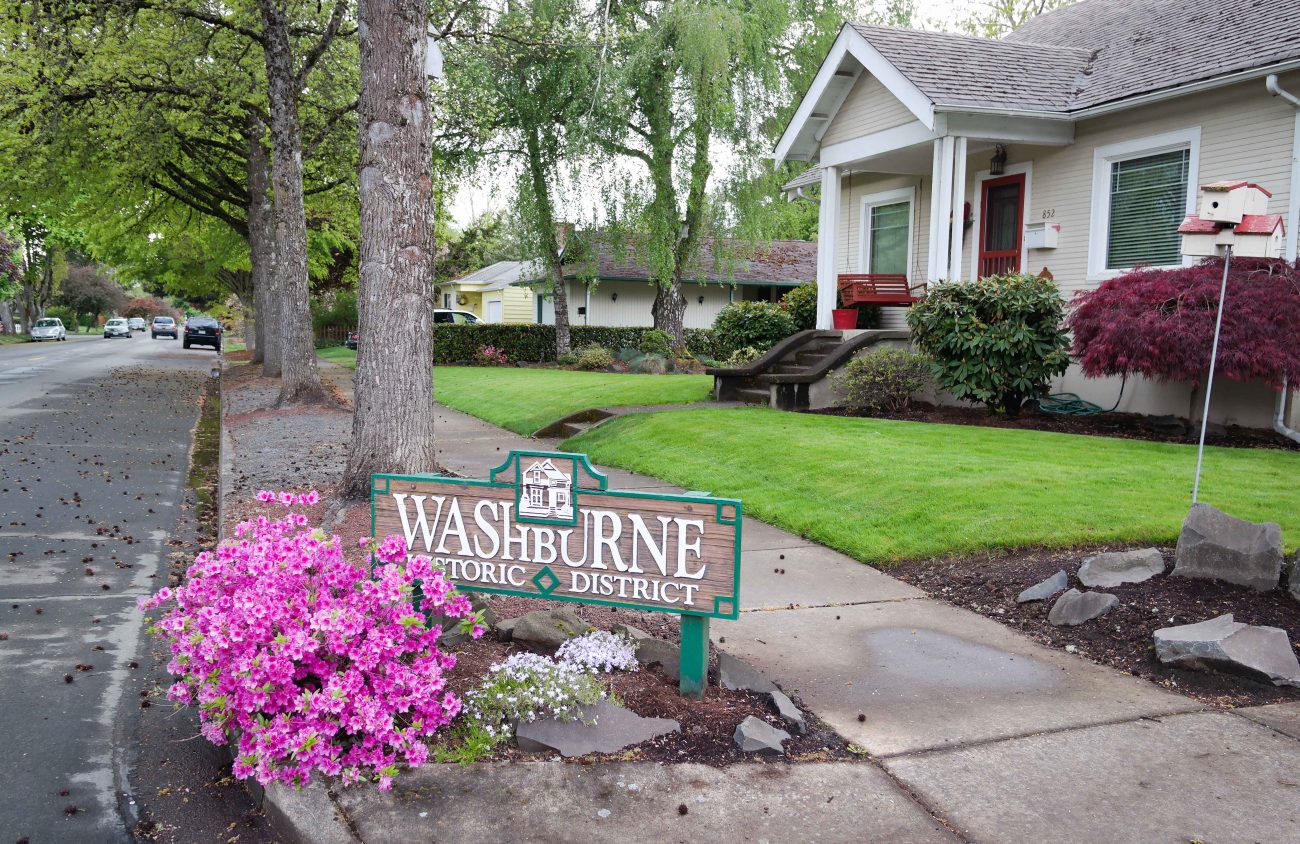Walk through the Washburne District in Springfield and you see well-manicured gardens, historic houses that bear the name of the first families that once lived there and one of the oldest churches in Lane County.
The neighborhood also has some historic medium-density housing units, says Mark Rust, the city of Springfield project manager who is leading the effort to change development code to meet zoning requirements set by House Bill 2001, the law that allows housing types like duplexes to be built in residential neighborhoods.
Some residents recently posted on the social media platform Nextdoor that they were concerned about the Washburne District losing its character when the city adopts HB 2001.
As Springfield adopts the new housing codes, the Washburne District — and the city — could see new medium density housing units to encourage more housing types that address the state and city’s housing crisis. But Rust says the historic Washburne District shouldn’t see a drastic change to its character.
Springfield’s Planning Commission will have a virtual public forum Tuesday, Jan. 4, where it’ll discuss proposed code changes. The state requires the HB 2001 compliant code to be submitted by June 30, 2022.
Just because the Washburne District is a historic neighborhood doesn’t mean it’s not immune to HB 2001. Historic Oregon neighborhoods, like the Washburne, must comply with rezoning to allow middle-density housing units, Rust says.
He says he received inquiries from residents about the proposed code impact on the neighborhood, and he says the city isn’t proposing eliminating the historic district status of the Washburne or removing the city’s Historic Commission.
Located within the boundaries of G, A and 10th streets and Pioneer Parkway, the Washburne District was added to the National Register of Historic Places in 1987.
Among the city’s proposed changes are allowing housing units such as duplex, triplex, fourplex, cottage clusters and townhomes in all residential areas, Rust says. The code would also prohibit new single-family units in medium and high-density zones, he adds.
That means adding more “middle housing” units in Springfield, which the city describes as units in between single-family units and apartments, according to a fact sheet from the city.
A 2019 housing market analysis by the U.S. Department of Housing and Urban Development reports that Springfield has an overall rental vacancy rate of 2.5 percent, described as “very tight.”
The code changes won’t change the Washburne’s historic density to high density, Rust says. According to the city’s current code, low density is six to 14 units per acre that are predominantly single-family houses and duplexes, medium density is 14 to 28 units per acre and high density is considered 28 to 42 dwelling units per acre.
And the historic character of the Washburne District could be maintained as the city adopts codes that follow the criteria set by HB 2001. Rust says the city is still permitted to apply design standards to developments that follow current residential units in a historic district, such as those found in Washburne.
The city of Springfield is accepting public comments on its development code changes through 5 pm Jan. 4. The Springfield Planning Commission’s public forum is 6 pm Tuesday, Jan. 4, via Zoom. Submit testimony and find the Zoom link at SpringfieldOregonSpeaks.org.
